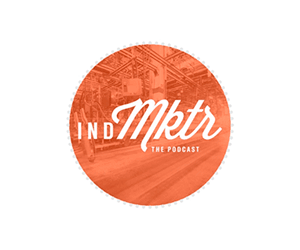Why do some sites suffer a Google penalty, or a fall in search rankings?
Well, Google’s primary goal is to provide the most useful, relevant content to its users. Since 2000, Google has been tweaking its algorithm to streamline the ranking process to get users the best answer to their queries. It does this by mixing up the organic rankings based on a number of different factors.
With every algorithm change, Google implements conditions that penalize certain practices. To avoid these negative effects, you have to play by the rules. For anyone who depends on a website for marketing and sales, it pays to keep on top of which practices might get you slapped with a Google penalty. Here’s a shortlist of seven mistakes everyone should avoid.
1. Unrelated Links
Ten years ago, the approach to link building was to bring in as many links to your site as you could. Many sites had outreach programs where they would offer a reciprocal link to any site they could. This resulted in sites having hundreds, or even thousands, of irrelevant links.
Today, Google likes to see links on a site that are related to its areas of focus. If you have a large number of links from assorted niche sites, you should review those links and remove any that are not related.
2. Poor-Quality Backlinks
These types of links are a bit vague, but are defined as links to your site that come from poor sites with low linking metrics. Links coming from sites that have low domain authority, no content, or a poor link profile of their own will make the backlink appear spammy. In other words, search engines judge your site by the company it keeps.
Google understands that a site cannot control all the poor quality backlinks that it reaps. However, Google can determine if there’s a connection between the site doing the linking and the site that is being linked to, such as a reciprocal link (see above). When building backlinks, remember that it’s always a matter of quality over quantity. One great link can outweigh a thousand bad links.
3. Links from Link Farms
These days, link farms are not as common as they use to be but they still exist. Link farms arose to cater to the once-popular SEO practice of submitting a site to hundreds of sites that hosted links, regardless of their areas of focus. The results were sites with thousands — sometimes millions — of links that were not related to any specific industry or type of content.
4. Hidden Links
Hidden links are an issue that is internal to a site and that is seen as sneaky and suspicious by search engines. Hidden links are links that are not viewable to users but that can be crawled by bots. Invisible links like this are typically hidden behind images or in text that is the same color as the background. Today, Google’s search engine bots are able to understand code well enough to determine that links like this are hidden, throwing a red flag and slapping an offending site with a Google penalty.
5. Comment Spam
If you outsourced your SEO campaign and your vendor guaranteed a certain number of links by a particular date, chances are you have some comment spam links in the mix. The basic idea here is to build links by going to blog articles and then adding generic comments that includes links to your site.
This spammy practice is very common among sites that are difficult to get links for, such as online gambling and pornography websites. Blogging platforms have adapted by moderating comments and designating links in comments as “nofollow” links, although spammy comments can still affect search engines’ perception of a site.
To counteract this, review your backlinks periodically to find out if you have any comment backlinks. It’s sad to say, but it’s not uncommon for competitor sites to create these sorts of links to a rival site in order to diminish its authority with search engines.
6. Purchased Links
Often, when a site begins buying links, the links come from sites that are high quality but fundamentally unrelated. Moreover, purchased links are often placed on pages of a site where there are links that have been bought by other sites, many of which are unrelated to one another. If you secure a link on a reputable site but it’s on a page full of disconnected links, the value of the link is diminished in the eyes of search engines.
Bottom line: Search engines place a lot of weight on links and the best link-building strategy is to build your links organically, even if it’s slower than purchasing links. It’s the simplest and most secure way of avoiding a Google penalty and improving your search rankings.
7. Repeated Content
Repeated content is a form of duplicate content, which Matt Cutts of Google has mentioned isn’t inherently a reason for penalization. However, repeating your content throughout your site can often draw the attention of the search engines in a way that will negatively affect your search rankings. So whenever you create new content, make sure that it doesn’t repeat what you have said before.
Recovering from a Google Penalty
If you follow these suggestions, you shouldn’t have any problems generating a respectable profile with search engines.
But what do you do if you find your site has been hit with a Google penalty? It is possible to get back on Google, but it’s not a simple process. To begin you will need to review your backlink profile, identify poor links, and then have them removed. Many site owners are unaware on how this process is done, so it is often outsourced to companies that specialize in Google suspensions.




